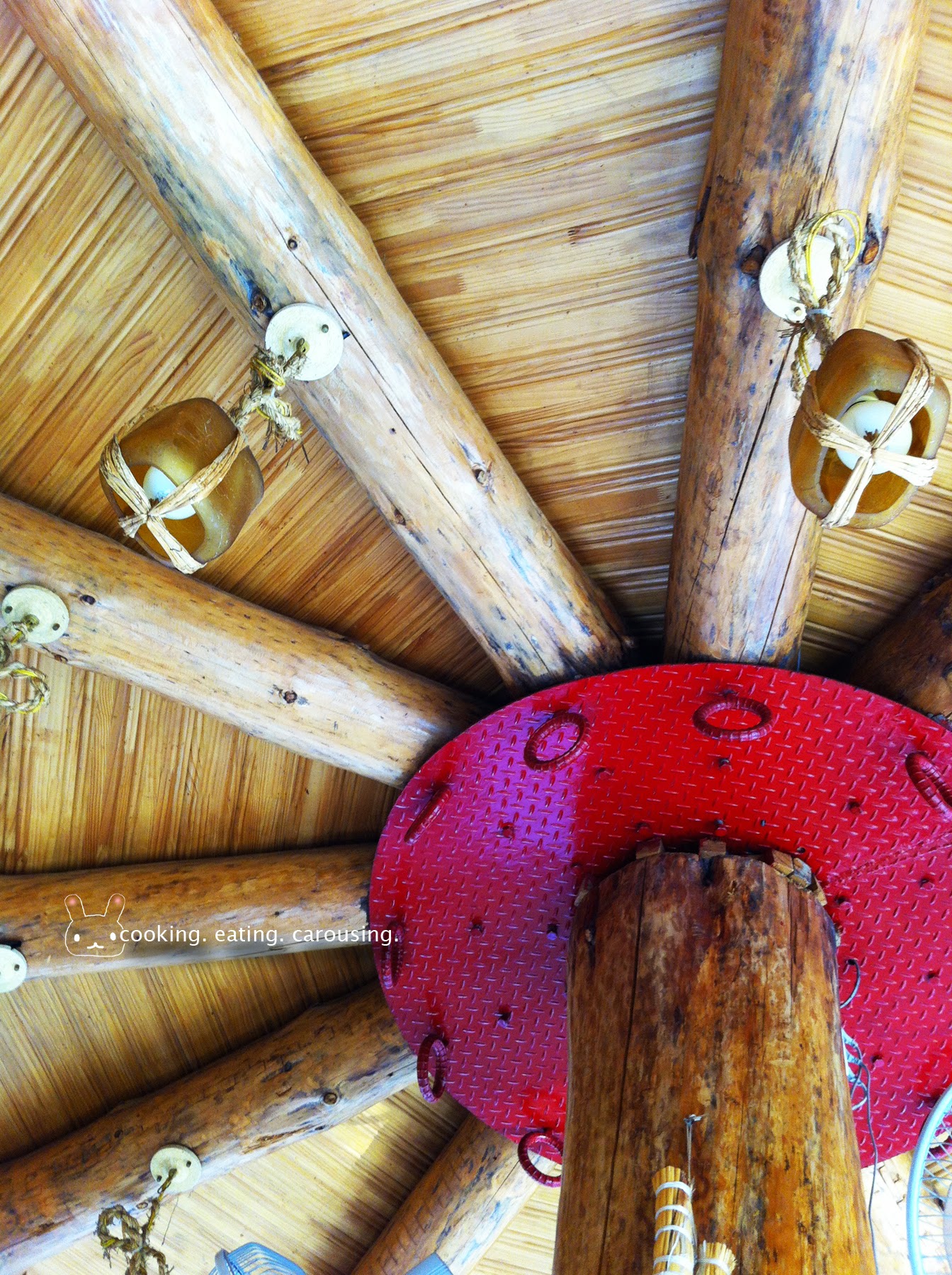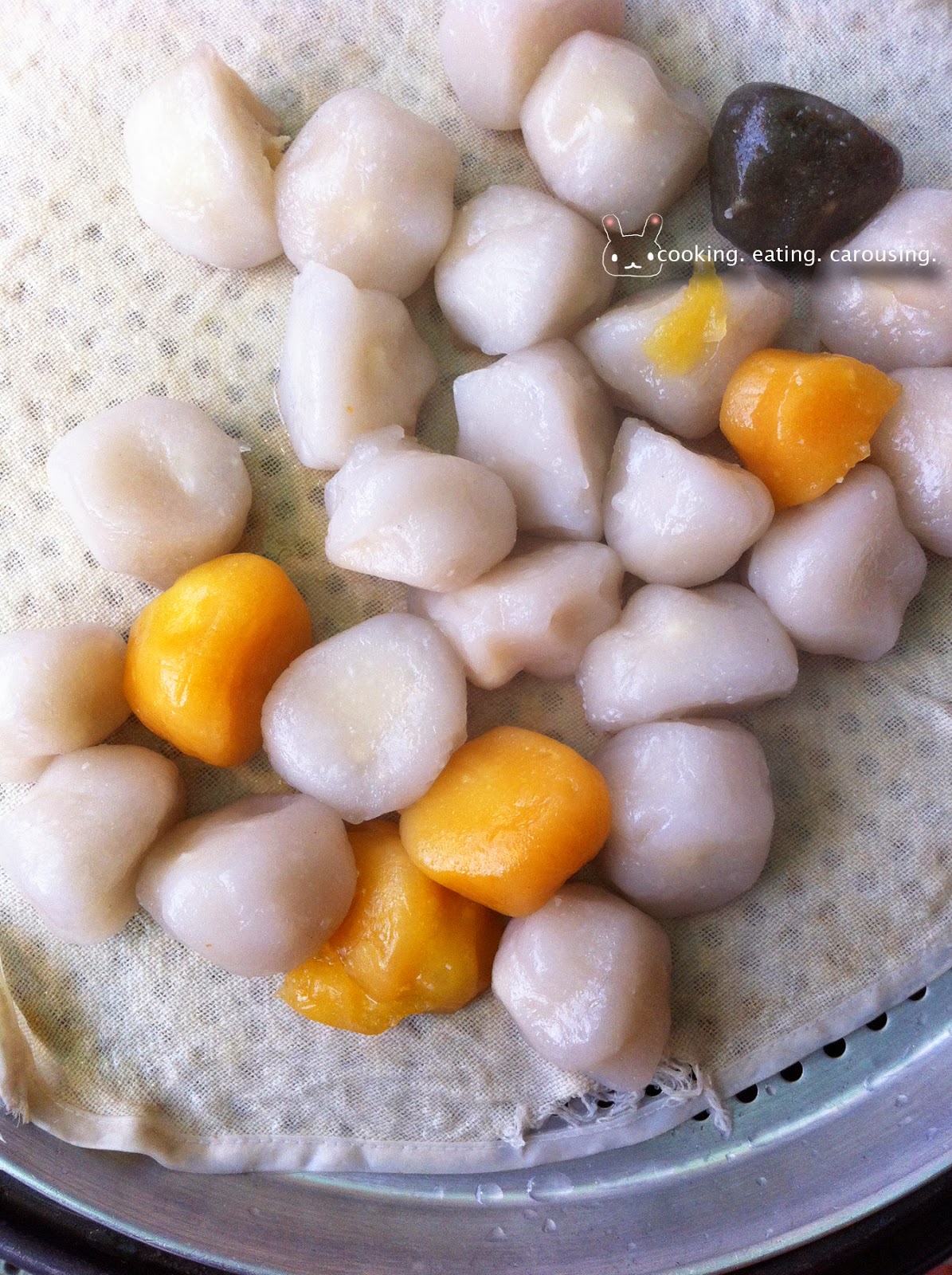Soybean, and in particular sundubu (soft tofu), is a specialty for towns surrounding Mount Seorak (Seoraksan). It is said that tofu around these parts are more flavourful due to the pure mountain spring water used in their production.
It was the second day of our whirlwind tour of South Korea, we have stopped over for lunch in Sokcho, 20 km North of the mountain. Today’s menu is sundubu jjigae, a stew of soft tofu with spicy broth packed with plump prawns, crabs and other sea creatures. The eatery sources their soybeans solely from the immediate area of Ganghyeon townships and makes their dubu in-house. As a result, visitors are treated to food made from and of the area. Dubu that was soft, melting and comforting to the stomach. The broth rendered sweet by the seafood. To accompany the meal were the Korean signature complimentary side dishes (banchan) of kimchi, spicy and sweet dried anchovies, japchae 잡채, humbly blanched chinese cabbage, seaweed and mushrooms.
But the unexpected surprise for me was the godeungeo gui 고등어구이. A mackerel split in half, salted, simply grilled and served as is on a platter. My tired body and palate craved the distinct mackerel taste and fattiness the oily fish gave. It’s called the omega-3 power baby!
Chodang Dubu 초당두부
1678-2 Domun-dong
Sokcho GANGWON-DO
강원도 속초시 도문동 1678-2
location on google maps
It had been another jam-packed day of offering prayers to the Tongil Daebul Buddha 통일대불 at the Sinheungsa temple 신흥사, a glimpse of the Sinheungsa monastery and riding the gondola up Seoraksan 설악산, all in the space of about 4 hours. Knowing that another energy-drenching activity was planned for that night, I ate a few more of those mackerels -- stealing them from other tables (with permission, some of the other tour-goers didn’t like fish!).
During the day’s activities before we can have the sundubu jjigae lunch at Sokcho, we kept ourselves going with snacking, like on these delightful gamja tteok 감자떡. We bought them from one of the small shops lining the road on our way back to the bus from Seoraksan. The gamja tteok’s chewy exterior is made of potato flour, not dissimilar to that of the Japanese mochi made of rice flour. Inside the chewy cake is a filling of powdery soybean flour, another nod to the Seoraksan regional specialty. There was not really a distinct sweet or salty taste to the gamja tteok, it was actually rather bland, but quite a few of Asian snacks and desserts are like so. In this particular case, the snack was more that of a textural experience than that of taste explosion.













No comments:
Post a Comment
Thank you for reading. I appreciate your constructive feedback and will answer any questions you might have. Comments that are rude, abusive, written with the intent to advertise, contain profanity or considered spam will not be published.